Terrace of a bar
La Terraza is located on a boulevard of an international and tourist city where we find avatars strolling, various shops and a bar with a terrace where our patient and their accompanying avatar will be seated.
On the table the patient will find a newspaper where they can read a headline related to cannabis or rave. To the left of our patient there is a television on, where advertising related to parties will appear from time to time. In front of the patient’s point of view, there is another client (smoker avatar), also consuming tobacco depending on the selected configuration variable. Other avatars are in the walking area, highlighting among these a couple, a passerby and a character with an “appearance” of substance use / sale. Finally, the commercial premises around the bar and visible by the patient will be a souvenir and a store selling objects related to cannabis. These businesses will also display less or more paraphernalia related to substances depending on the selected configuration variable.
VARIABLES SETTINGS
The configuration variables will allow modifying the environment to suit each patient and each phase, be it the evaluation or the treatment phase. For this, you will have the same configuration variables available, explained below:
- Gender
Choose between a male or female body. A neutral body is selected by default.
- Skin tone
Choose the skin tone that best represents your patient to enhance the feeling of immersion.
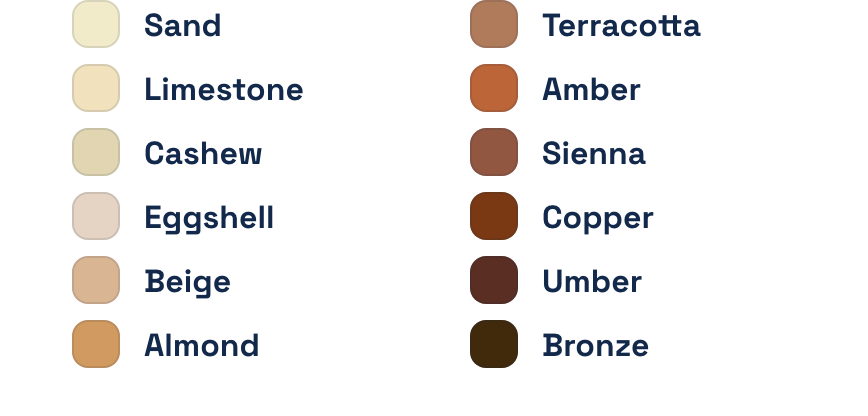
- Companion
The accompanying variable will allow us to configure which character accompanies our patient and carries the substance incitement.
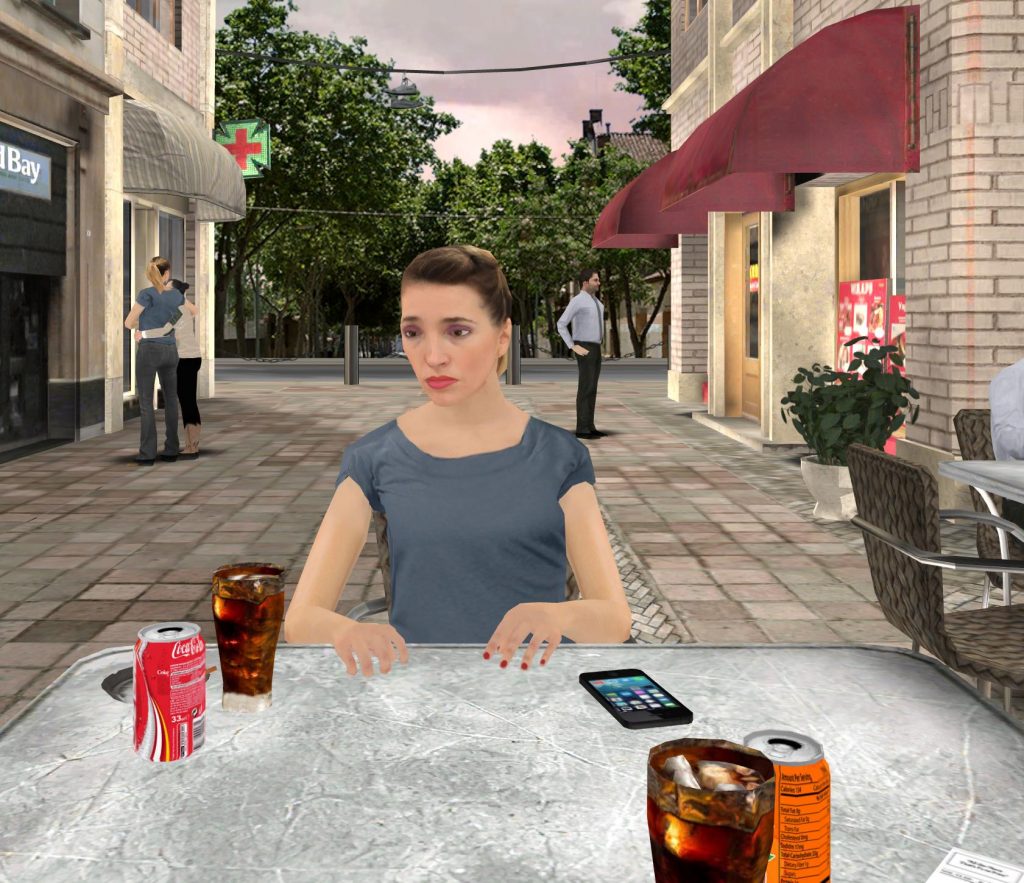

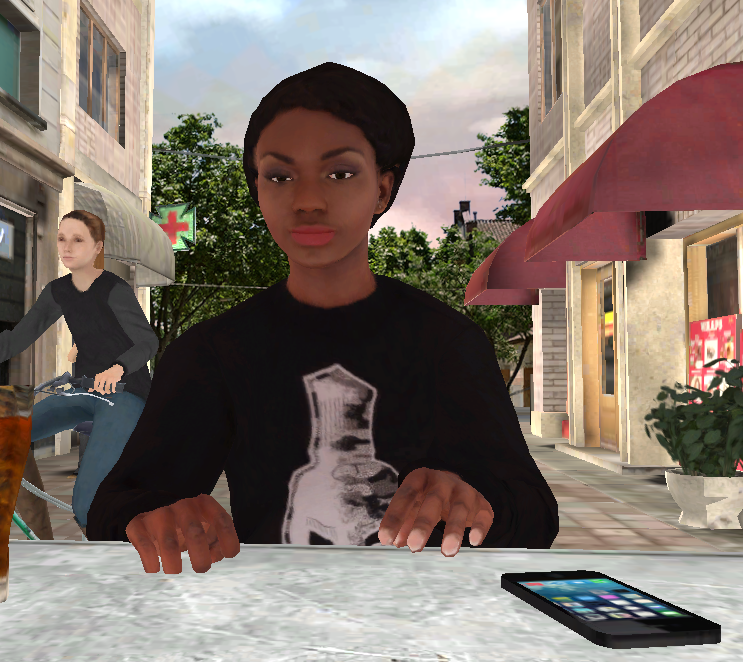
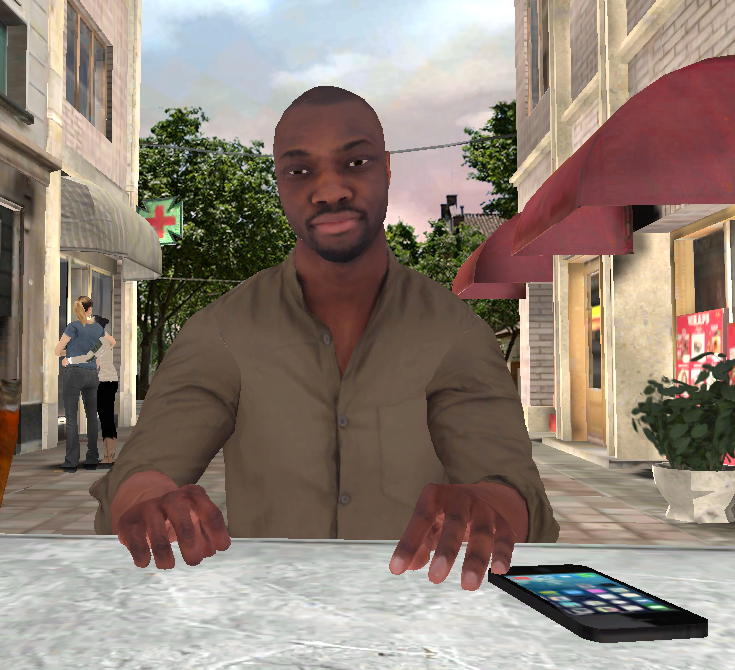
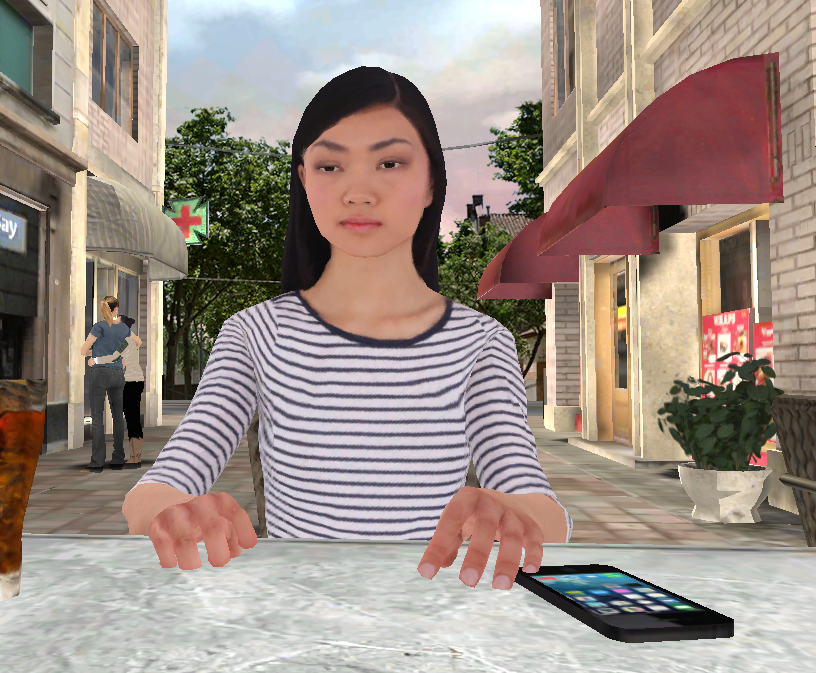
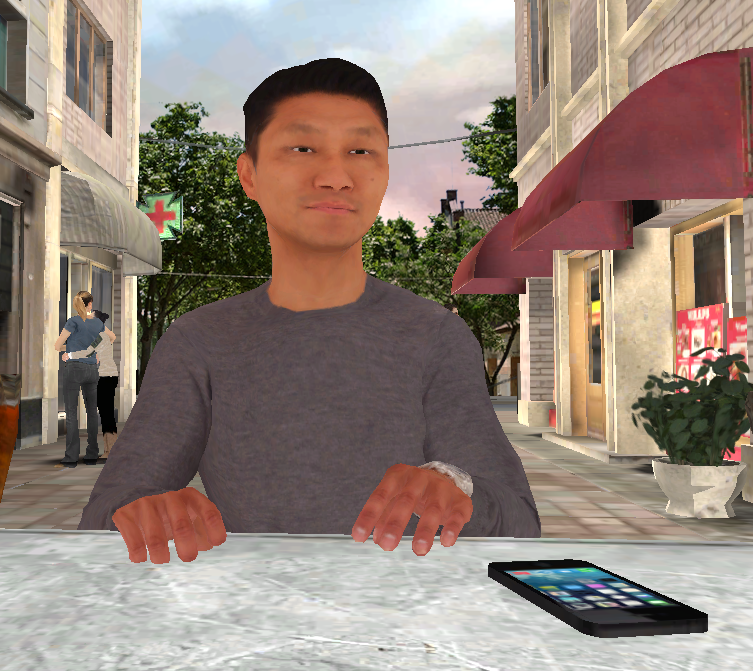

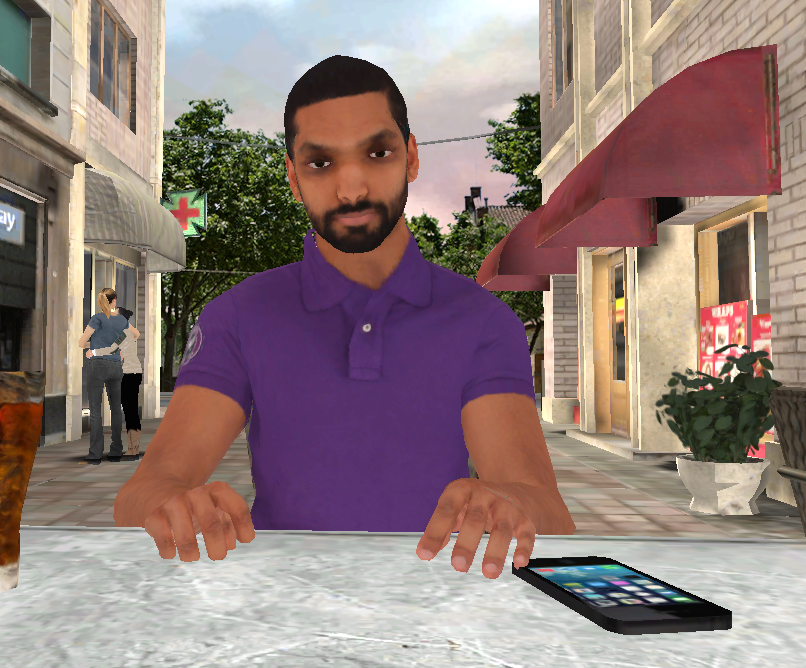
- Paraphernalia
Little / Medium / A lot
The paraphernalia variable will make it possible to configure the presence of a smaller or greater number of stimuli related to alcohol, tobacco and cannabis. By selecting little, there will be few stimuli and they will be related to low alcohol and tobacco, being largely contextual cues for the consumption impulse (Traylor et al. 2011). Only in the high configuration will contextual and proximal signals appear (Traylor et al. 2011), for the craving of the three substances. The items of paraphernalia that appear at each level of the configuration variable are listed below in table form.
| ENVIRONMENT | LITTLE | MEDIUM | A LOT |
|---|---|---|---|
| Our Table | Non-alcoholic beverages (Soft Drinks) | Water for patient, Beer for our companion | The drinks are beers. |
| Newspaper cover on the table | Cover: CANNABIS: Legalization or Persecution? and a photo with one finger up (Green) and one finger down (Red) | Cover: ¿CANNABIS: “The bill for legalization of cannabis passes the first camera” a photo of cannabis plantation. | Cover: Climate change, mid-story announcement about a macro Rave party |
| Character at the table in front (Smoker) | Smoking and packet of tobacco on the table | He smokes a cigar and has a shisha on the table | He smokes a cigar and has a shisha on the table |
| Television | Every X appears advertising about beach party | Every X appears advertising about Techno music | Every X appears advertising about a macro-party / Rave |
| Seed shop | The blind is down (Closed) | Same as above | Same as above but the blind goes up when the scene takes X time. |
| Souvenir shop | The souvenir has clothes with words about Turkey, Romania, Portugal, Spain… | To this is added clothes of Bob Marley and Homer Simpson smoking a joint | Same as the previous |
- Sanitary mask
You can choose whether or not the people around you will have a mask.
EVENTS
TYPE OF ADDICTION
This event configures the type of incitement to consumption that the accompanying avatar will make to the patient. This event is combined with the short or long prompt event. For example, to trigger a conversation that involves declining invitations to drink alcohol, the therapist will choose the Alcohol option.
- Alcohol: If alcohol is chosen, the accompanying avatar will ask or propose to drink something to the patient …
- Tobacco: If tobacco is chosen, they will offer or ask for a cigarette…
- Cannabis: If cannabis is chosen, the offer will revolve around this substance.
INCITEMENT
This event will initiate a conversation between the accompanying avatar and the patient. There will be two options: short and long, and they will be conditioned on the initial question that the accompanying avatar will launch, to the type of addiction event (alcohol / tobacco / cannabis).
- SHORT
In short conversation, the therapeutic objective is to work on negative assertiveness, rejecting a proposal for consumption. When asked by the accompanying avatar, answers will appear corresponding to passive (one option), aggressive (one option) and assertive (two options) communicative style. In this way the event can be used to:
A.1. Assess (assess the patient’s communicative style)
A.2. Intervene (work with the patient to change to a more assertive style)
- LONG
In the long conversation, the therapeutic objective is to work on negative assertiveness by rejecting a consumption proposal and being consistent with the rejection, despite the insistence of the accompanying avatar. Responses will appear corresponding to the communicative style passive (one option), aggressive (one option) and assertive (two options). In this way the environment will serve to:
B.1. Evaluate (determine the patient’s communicative style). This option is the same as in the short conversation event.
B.2. Intervene (work with the patient on negative and positive assertiveness). In the conversation the accompanying avatar will incite consumption. The patient can only reject consumption (passive, assertive or aggressive communicative style). The accompanying avatar will insist on the consumption before which the patient must reaffirm himself in the rejection on this occasion through negative assertiveness. The accompanying avatar will initiate the personal criticism of the patient which will allow working with a second reaffirmation of the rejection by the patient (assertive). Finally, a response of support / claudication will appear from the accompanying avatar, to which the patient can show gratitude (positive assertiveness). At that point the conversation will end.
In order to stimulate conversations, so that they are not linear, they are not always repeated the same and the use of the selection of assertive options is reinforced, a system of positive reinforcement is established on the behavior of the patient when he chooses assertive responses:
- Patient: select passive option:
- 70% of the occasions will appear AI insistence
- 20% of the occasions will appear critical AI
- 10% of the occasions will appear AI support
- Patient: select aggressive option
- 20% of the occasions will appear AI insistence
- 70% of the times Sometimes critical AI will appear
- 10% of the times support AI will appear
- Patient: select assertive option:
- 40% of the times will appear AI insistence
- 30% of the times will appear critical AI
- 30% of the times will appear AI support
EMOTIONAL CRAVING TYPE
The emotional craving event consists of 6 variables, each of them related to one of the basic emotions (fear-anxiety, disgust-boredom , anger, joy, sadness and surprise).
Once the event is selected, the patient will receive a text message from Alex, on his mobile which is located on the table. The text, which can be read in a sandwich, will send you information with the selected emotional charge. In addition to reading the message, the accompanying avatar will make comments aloud to promote emotional activation.
- ANXIETY
A calendar notification appears on my mobile to go to the movies (it comes out as a pop-up and warns that there are 20 minutes left)… 10 seconds later a message from a friend (Alex) comes in saying that he will be late, please let’s hope.
The accompanying avatar, to whom the message has also reached, tells me worried: We don’t make it to the cinema, we will miss the beginning of the film, what happened to him? Will it be OK?
- ANGER
The person we are meeting with sends a last minute message and tells us that he will not come: Enter a text message from my friend (Alex) to my mobile phone and to that of my companion avatar. “Hey, I’m not coming in the end. See you!.
My accompanying avatar says angrily @: “I can’t believe it, it’s always the same. Has he planted us again? And do you still want to stay? That’s good for you! “
- BOREDOM
A calendar notification appears on my mobile to go to the movies (it comes out as a pop-up and advises that there are 60 minutes left) and it is still too early.
Our accompanying avatar tells us bored @ about ten seconds after the mobile reminder: “Wow, there’s still an hour left, what do we do?”
- JOY
The person I have met, my friend (Alex) tells us, via text message to his mobile phone, that he is arriving and that he really wants to see us.
My accompanying avatar says very content @: “How nice, have you seen? It’s coming: We’re going to have a great time!
- SURPRISE
A text message arrives to the patient and to the accompanying avatar of a friend (Alex): “Party at home tonight!
Will you sign up?” The accompanying avatar says surprised: “Great, later we went to the parties at Alex’s house”
- SADNESS
The text message is about the misfortune of a close person, Alex: A text message arrives to the patient and the accompanying avatar of a friend: “Confirmed, Alex’s cancer is incurable”
(Alex): “Confirmed…, I have been confirmed to have terminal cancer. I can not believe it. What a disgusting life! ”. The accompanying avatar is visibly affected, he leaves the mobile on the table and looks at me very sad and with tears in his eyes. Very sad, she sobs: “what a disaster!”
Note: Once the events are finished, you will return to the starting scene.
EMOTIONAL CRAVING
Play the emotional craving based on the selection of the previous event.